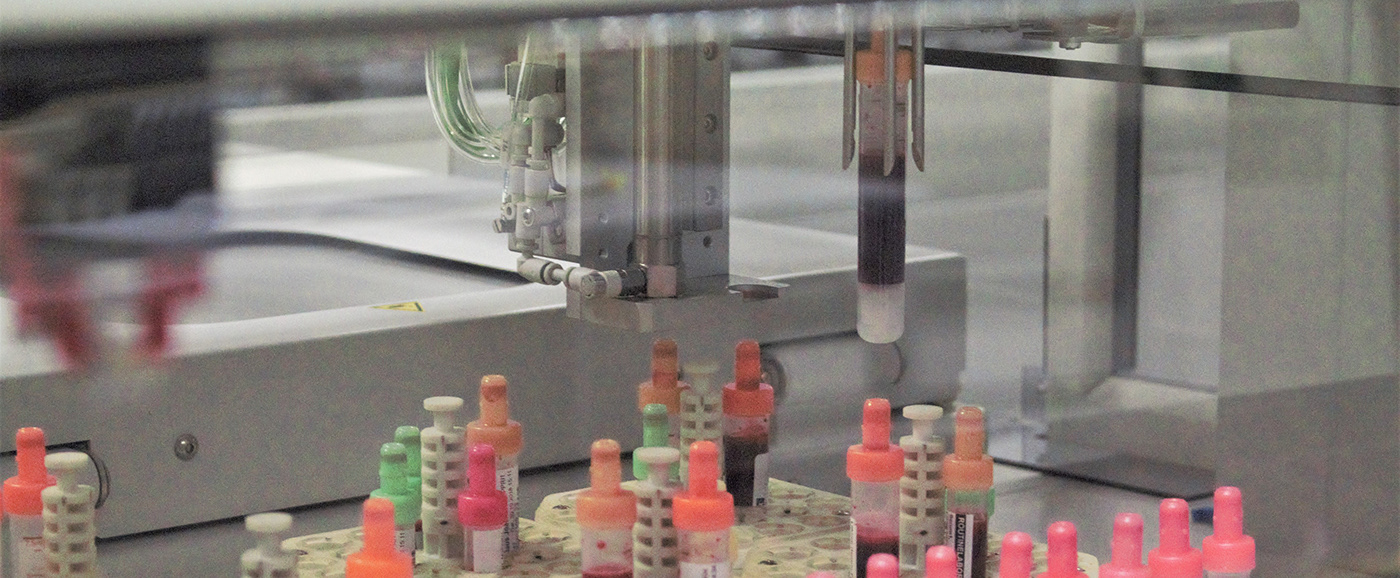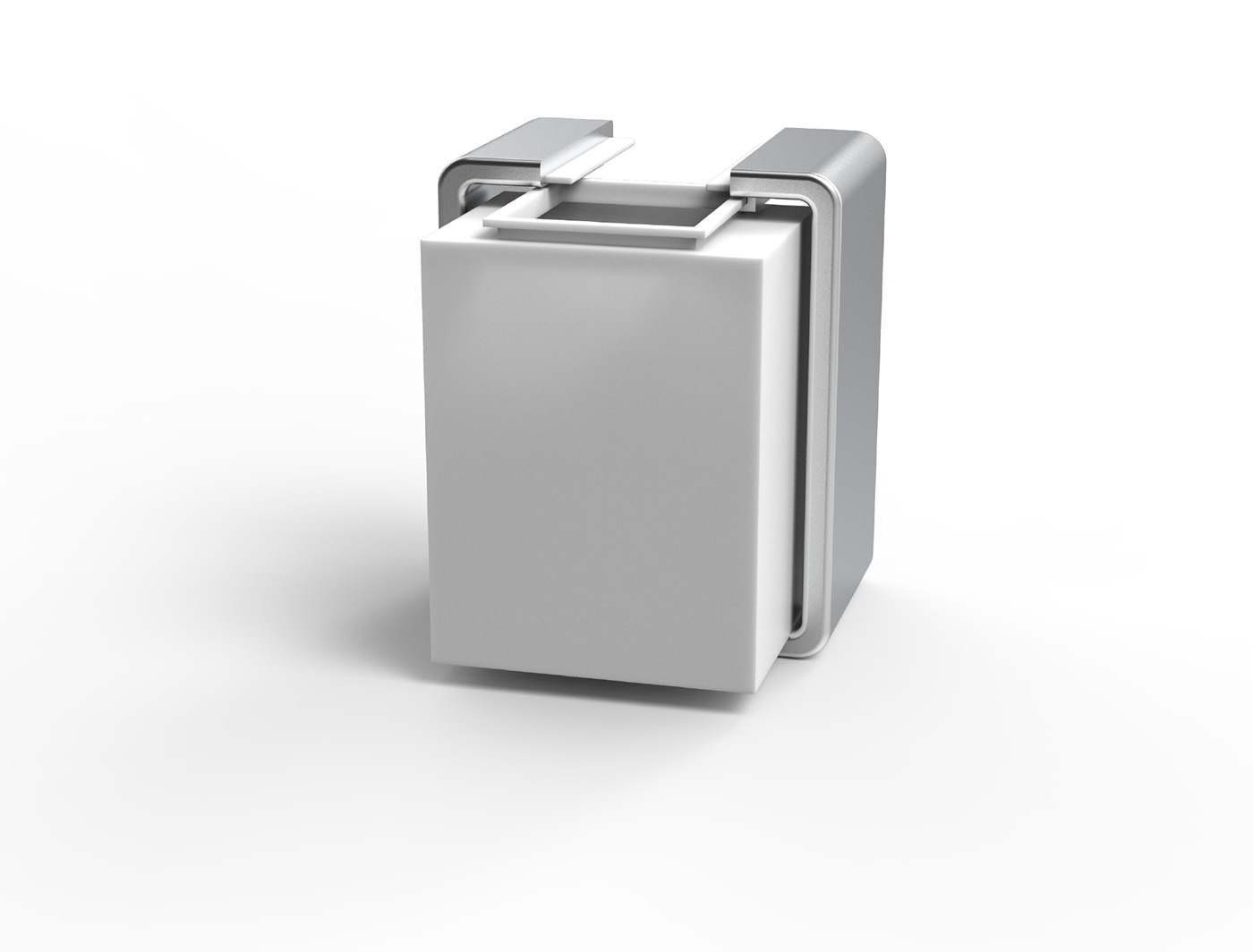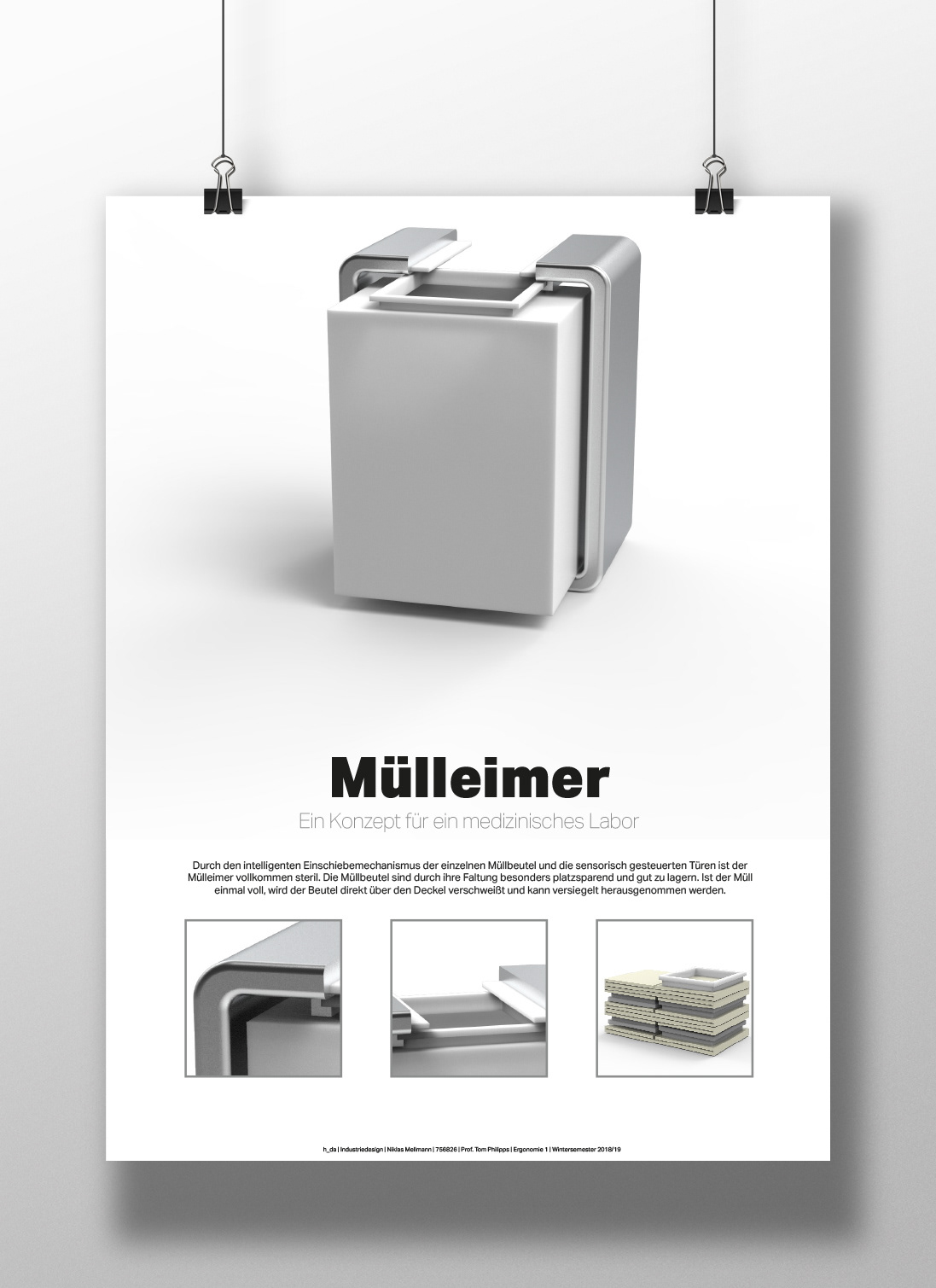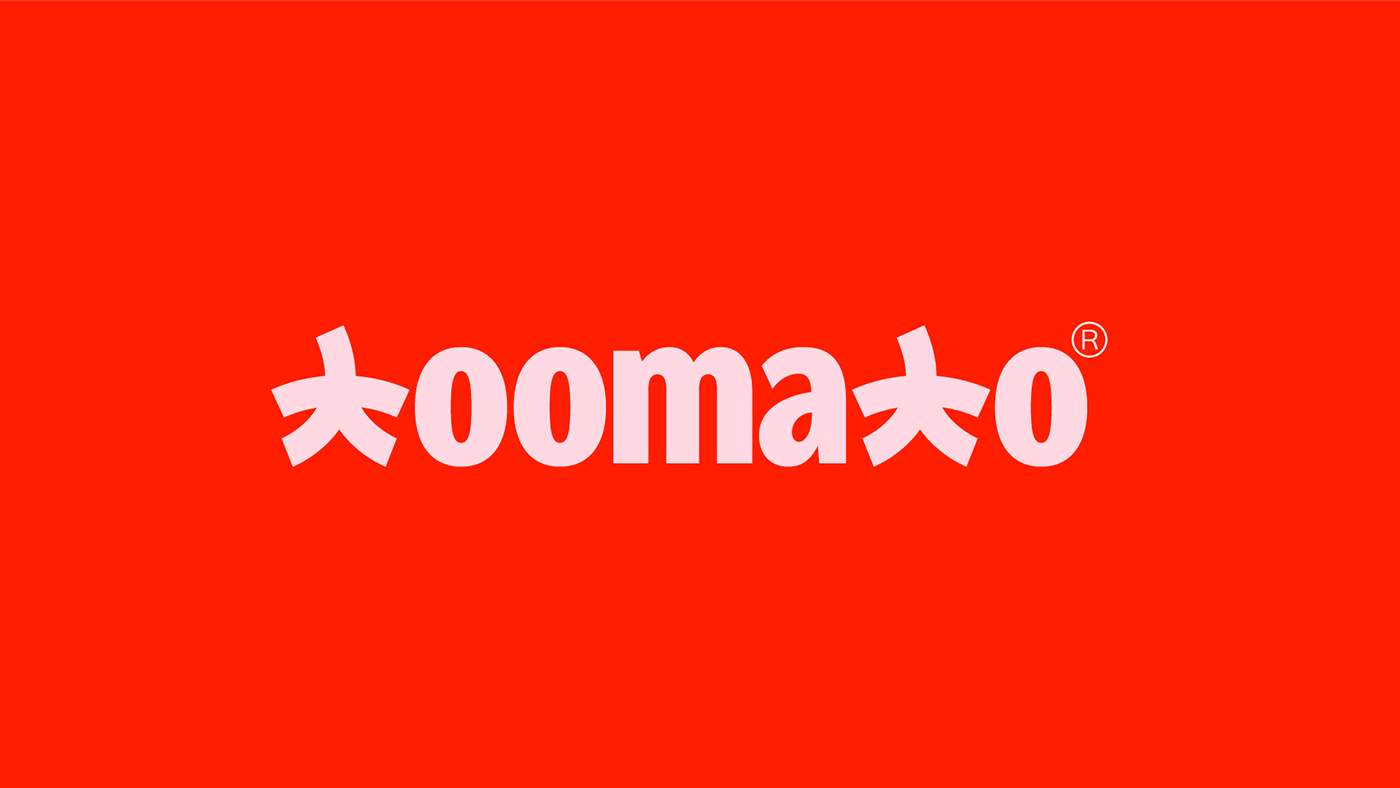
Aseptic - Concept design for a sensor-controlled bin
Design by Constantin Boes and Niklas Mellmann
Concept design class under the guidance of Prof. Tom Philipps
Concept design class under the guidance of Prof. Tom Philipps
Design von Constantin Boes und Niklas Mellmann
Entwurfskurs unter Betreuung von Prof. Tom Philipps
Entwurfskurs unter Betreuung von Prof. Tom Philipps
Assignment
Aufgabenstellung
The project was developed within the scope of a workplace analysis in the medical laboratory of the University Hospital in Mainz (Germany). Through a process analysis and the observation of work processes, employee surveys and the personal interaction with the working environment and the existing instruments, it should be determined how working can be made safer, easier and more efficient.
Das Projekt entstand im Rahmen einer Arbeitsplatzanalyse im medizinischen Labor der Universitätsklinik in Mainz (Deutschland). Durch eine Prozessanalyse und die Beobachtung von Arbeitsabläufen, Befragungen der Angestellten und den persönlichen Umgang mit dem Arbeitsumfeld und den bestehenden Instrumenten sollte herausgefunden werden, wie das Arbeiten sicherer, einfacher und effektiver gemacht werden kann.

Research and problem statement
Recherche und Problemstellung
Recherche und Problemstellung
The most serious problem that was immediately noticed was that keeping the workplace sterile, and thus the safety of personnel and laboratory staff, so drastically disrupted the workflow that employees did not take the necessary precautions, or paid little attention to them. This problem occurred mainly in the removal of contaminated wipes, the use of ampoules or germ-contaminated packaging materials. The disposable bins, which were self-sealing by pressing on, prevented the laboratory technicians from their work in that they did not close the lids of the bins every time, but left them open so that they could continue to dispose of waste without touching the contaminated handles of the bin.
Das gravierendste Problem, das sofort auffiel war, dass das Sterilhalten des Arbeitsplatzes und damit die Sicherheit des Personals und der Mitarbeiter in den Laboratorien, den Arbeitsablauf so drastisch störten, dass die Angestellten nicht die nötigen Vorsichtsmaßnahmen trafen, oder sie nur geringfügig beachteten. Dieses Problem trat vor allem bei der Beseitigung von kontaminierten Tüchern, benutzen Ampullen oder mit Keimen belastetes Verpackungsmaterialien. Die sich durch Andrücken selbst versiegelnden Einmal-Mülleimer hinderten die Laboranten insofern an ihrer Arbeit, dass sie die Deckel der Mülleimer nicht jedes mal verschlossen, sondern sie offen stehen ließen, um so , ohne die kontaminierten Griffe des Mülleimers zu berühren, weiterhin Müll entsorgen zu können.

Funktionsweise und Abläufe
Operation and processes
Operation and processes
The new concept is mainly based on the intention to change the topic of sterile operation and the problem of the one-time use of the bin. The previously used bins were sealed after they were full and then burned in their entirety. This procedure does not only mean a high consumption of rubbish bins, and thus of material, but this material is also eliminated by incineration without reuse. The new design solves this problem with a reusable body that is permanently installed in the laboratories. It is equipped with a bag made of a sturdy polyurethane, which is welded at the push of a button when fully filled. This closes the bag airtight and prevents germs and liquids from escaping. These bags are then incinerated as before, but much less material is required.
The bin itself is then restocked with a new bag.
In order to improve hygiene aspects, the body of the bin has a sliding mechanism which closes the bag airtight when closed. This mechanism is triggered by sensors when the user holds his hand over it or throws something into it. Then the bin opens and contaminated objects can be disposed of. When the sensor-controlled area is free again, the bin closes automatically.
The bin itself is then restocked with a new bag.
In order to improve hygiene aspects, the body of the bin has a sliding mechanism which closes the bag airtight when closed. This mechanism is triggered by sensors when the user holds his hand over it or throws something into it. Then the bin opens and contaminated objects can be disposed of. When the sensor-controlled area is free again, the bin closes automatically.
Das neue Konzept ist vor allem aus der Intension entstanden die Thematik der sterilen Bedienung und die Problematik der Einmalverwendung des Mülleimers zu ändern. Die zuvor verwendeten Mülleimer wurden, nachdem sie voll waren, versiegelt und dann in Gänze verbrannt. Dieses Verfahren bedeutet nicht nur einen hohen Verbrauch an Mülleimern, und damit an Material, sondern diese Material wird auch noch durch die Verbrennung ohne Wiedernutzen beseitigt. Das neue Design löst dieses Problem mit einem wiederverwendbaren Korpus, der dauerhaft in den Laboren steht. Er wird bestückt mit einer, aus stichfestem Polyurethan gefertigten, Tüte, die bei Vollgefülltem Zustand auf Knopfdruck verschweißt wird. Dadurch wird sie luftdicht verschlossen und es können weder Keime noch Flüssigkeiten austreten. Diese Tüten werden dann, wie zuvor auch verbrannt, es wird jedoch viel weniger Material benötigt.
Der Mülleimer an sich wird dann wieder mit einer einer neuen Tüte befüllt.
Um die Aspekte der Hygiene zu verbessern, verfügt der Korpus des Mülleimers über einen Schiebemechanismus, der im geschlossenen Zustand die Mülltüte luftdicht verschließt. Dieser Mechanismus wird durch Sensoren ausgelöst wenn der Benutzer seine Hand darüber hält oder etwas hinein wirft. Dann öffnet sich der Mülleimer und kontaminierte Gegenstände können entsorgt werden. Ist der sensorgesteuerte Bereich wieder frei, schließt der Mülleimer sich automatisch
Der Mülleimer an sich wird dann wieder mit einer einer neuen Tüte befüllt.
Um die Aspekte der Hygiene zu verbessern, verfügt der Korpus des Mülleimers über einen Schiebemechanismus, der im geschlossenen Zustand die Mülltüte luftdicht verschließt. Dieser Mechanismus wird durch Sensoren ausgelöst wenn der Benutzer seine Hand darüber hält oder etwas hinein wirft. Dann öffnet sich der Mülleimer und kontaminierte Gegenstände können entsorgt werden. Ist der sensorgesteuerte Bereich wieder frei, schließt der Mülleimer sich automatisch
For a better general understanding of the system, graphics have been created that explain the structure and function of the system.
Zum besseren generellen Verständnis des Modulsystems wurden Grafiken erstellt, die Aufbau und Funktionsweise der Anlage erklären.
Sketches and modelling
Skizzen und Vormodelle
Skizzen und Vormodelle
In the process of form finding, various drawings, preliminary models and first 3D models were produced on the basis of the existing research. The CAD programs Autodesk Inventor and Rhino were used for this.
Im Prozess der Formfindung wurde auf Grundlage der bestehenden Recherche verschiedene Zeichnungen, Vormodelle und erste 3D Modelle angefertigt. Dafür wurden die CAD Programme Autodesk Inventor und Rhino verwendet.



Model making
Modellbau
In model making the details were concentrated on the toilet cabins. The other two modules are only shown as white models to show the proportions. The materials used for the models are a combination of acrylic glass and ureol. Parts from CNC milling, turned parts and lasered acrylic glass elements were used for production.
Im Modellbau konzentrierte sich die Ausarbeitung der Details auf die Toilettenkabinen. Die beiden weiteren Module sind lediglich als Weißmodelle dargestellt um die Größenverhältnisse zu zeigen. Bei den verwendeten Materialien für den Modellbau handelt es sich um eine Kombination aus Acrylglas und Ureol. Bei der Fertigung wurden Teile aus der CNC-Fräße, Drehteile und gelaserte Acrylglaselemente verwendet.
Results
Ergebnisse













